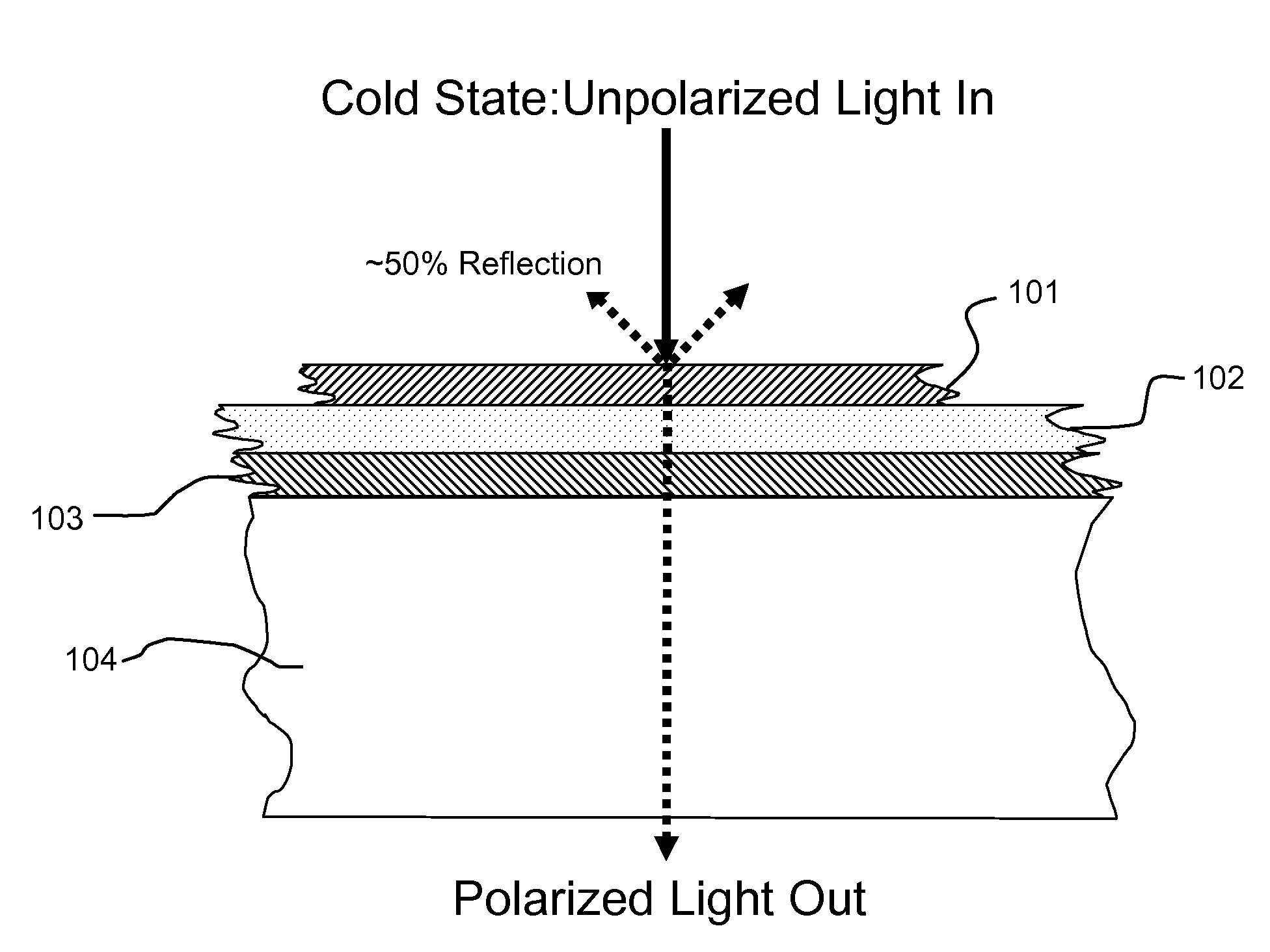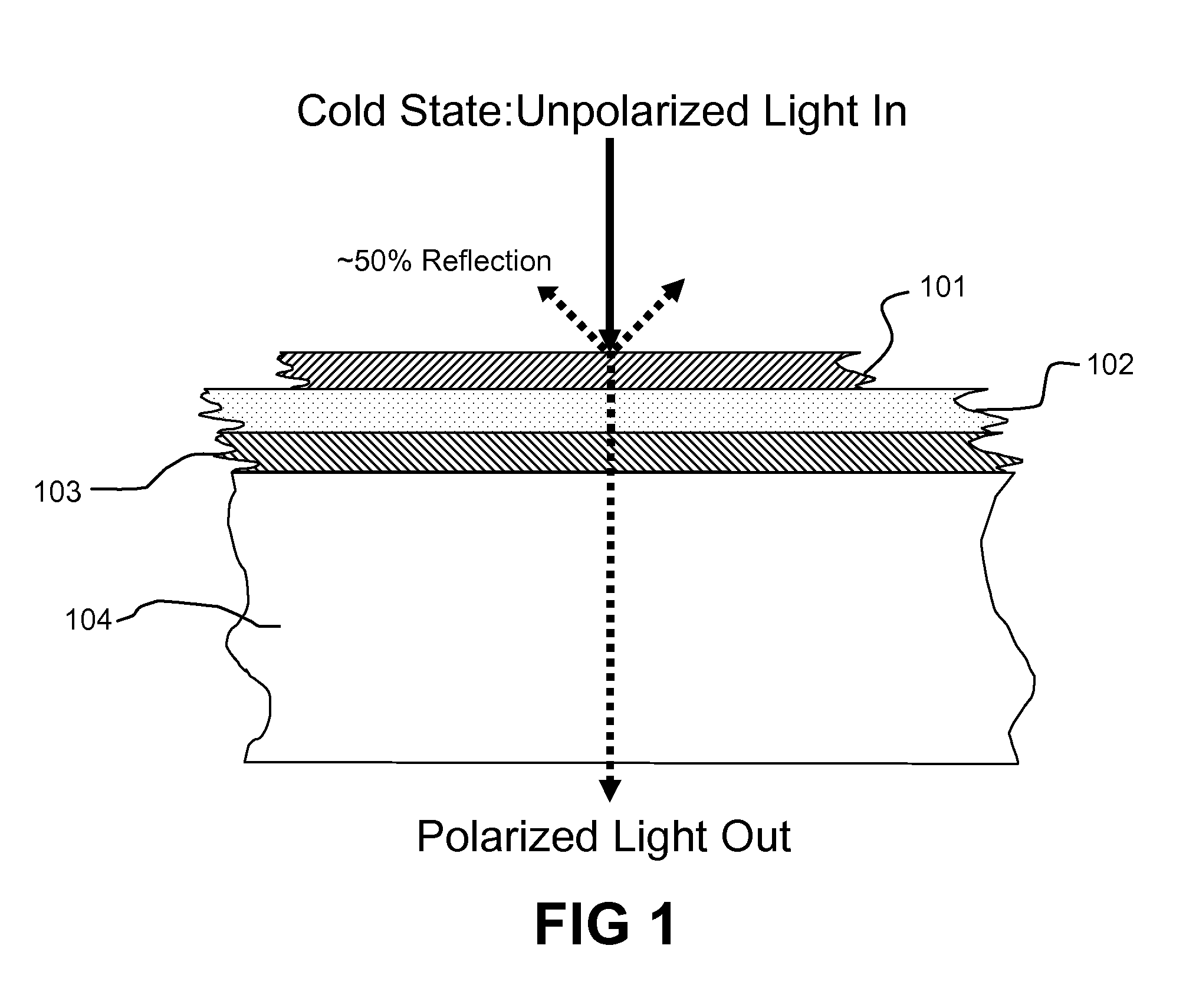Thermally Switched Reflective Optical Shutter
a reflective optical shutter and thermal switch technology, applied in the direction of optical elements, door/window protective devices, instruments, etc., can solve the problems of limiting the utility of the system in temperature-regulating applications, affecting the ability of the system to regulate temperature, and blocking unwanted sunlight in cold weather and unwanted sunligh
- Summary
- Abstract
- Description
- Claims
- Application Information
AI Technical Summary
Benefits of technology
Problems solved by technology
Method used
Image
Examples
Embodiment Construction
[0030]A thermotropic optical depolarizer may be used in conjunction with two reflective polarizers to create a thermally switched reflective optical shutter (TSROS) that allows light and radiant energy to pass through the shutter at low temperatures and reflects it away at high temperatures. The depolarizer is specifically selected or designed to be thermotropic, i.e., its polarization state shifts at a predetermined temperature. The TSROS device has particular, but not exclusive, application in regulating the temperatures of buildings, vehicles, or other structures by controlling the amount of solar radiation they absorb.
[0031]The structure, composition, manufacture, and function of liquid crystals, polarizers, and reflective polarizers are well documented, but the following elaboration is presented for better understanding. Many materials exhibit thermotropic properties, including liquid crystals, which transition from an ordered or “ON” state (e.g., crystalline, nematic, or smect...
PUM
| Property | Measurement | Unit |
|---|---|---|
| clearing point | aaaaa | aaaaa |
| clearing point | aaaaa | aaaaa |
| angle | aaaaa | aaaaa |
Abstract
Description
Claims
Application Information
 Login to View More
Login to View More - R&D
- Intellectual Property
- Life Sciences
- Materials
- Tech Scout
- Unparalleled Data Quality
- Higher Quality Content
- 60% Fewer Hallucinations
Browse by: Latest US Patents, China's latest patents, Technical Efficacy Thesaurus, Application Domain, Technology Topic, Popular Technical Reports.
© 2025 PatSnap. All rights reserved.Legal|Privacy policy|Modern Slavery Act Transparency Statement|Sitemap|About US| Contact US: help@patsnap.com



